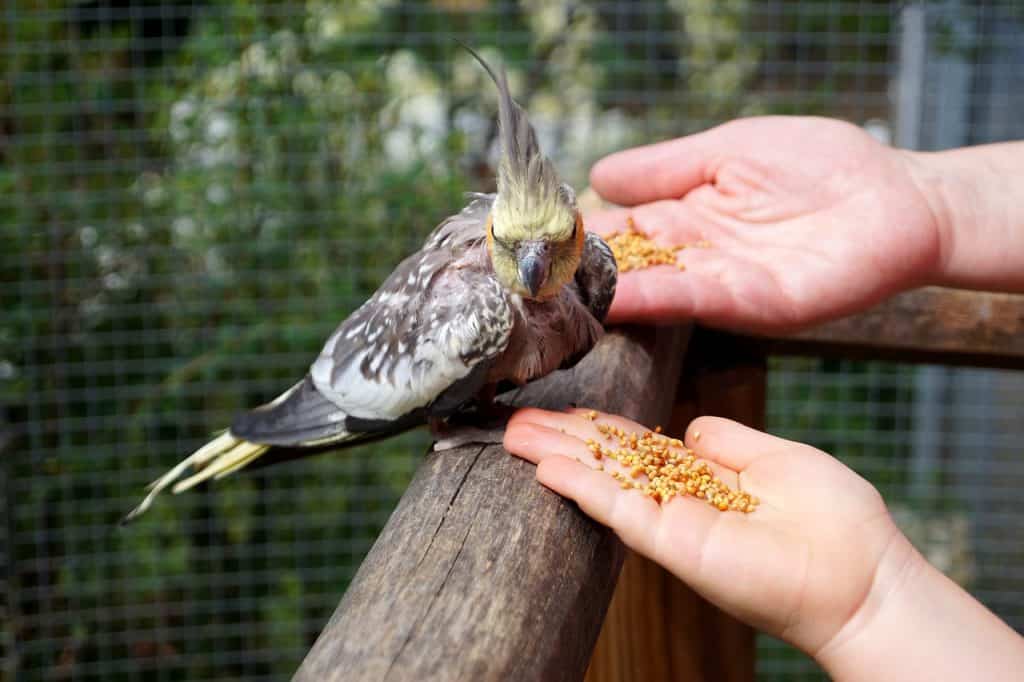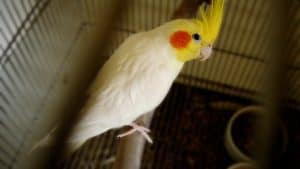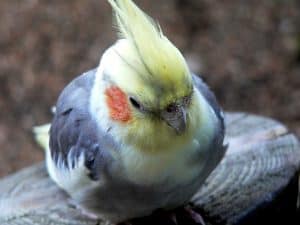How to hold a cockatiel can be a little tricky at first, but once you get the hang of it, it’s really not that difficult.
Your new cockatiel is a friendly little bird that enjoys socializing. Once he becomes accustomed to you and the other humans in his home, you can train him to step onto your finger and be held. Keep in mind that Cockatiels can be skittish, so approach this process slowly.
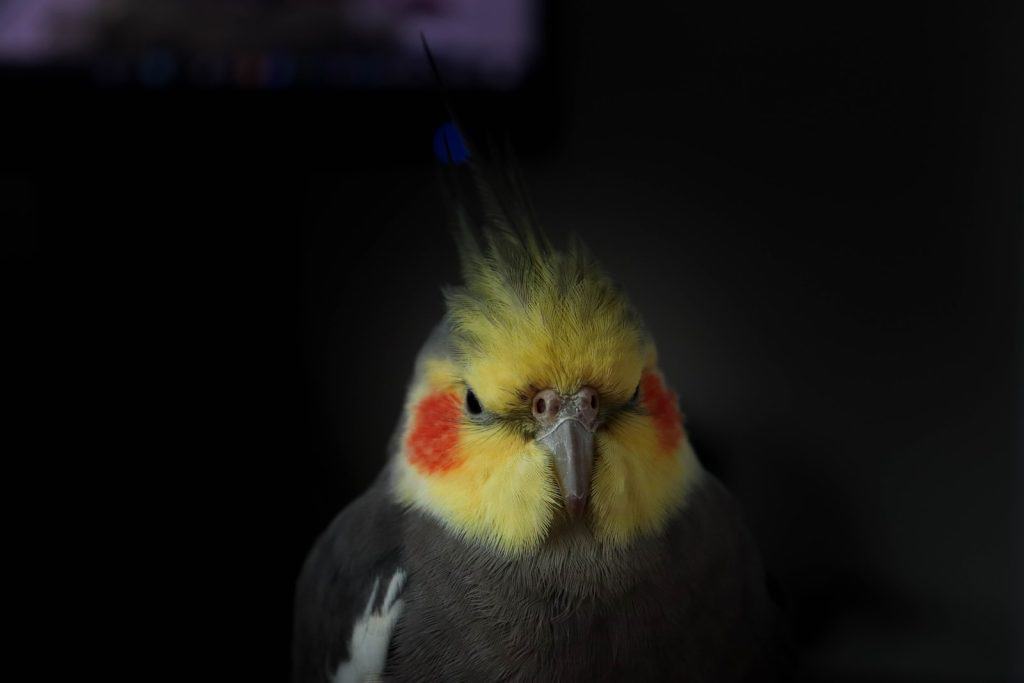
How to Hold a Cockatiel?
Here are a few tips on how to hold a cockatiel:
Step 1
If you do not feel comfortable doing so, speak to your young bird when he is in his cage. Start by speaking softly and calmly to him. Take it slowly on this step so he can get acquainted with you and allow you to proceed to the following one. Moving too quickly can lead to a frightened biting bird. You could make your bird fearful if you this drastically. Every time you talk with him, open the cage and offer him a morsel of food with your hand. Just like any gentle pet owners, who always handle birds safely and carefully think how to tame cockatiels.
Step 2
Gently slip a leather glove onto your hand to protect yourself, then unlock and open your cockatiel’s cage door. Move your hand slowly inside, letting him get used to the new addition. Keep calm and let him approach you on his own time; offer tasty treats as encouragement. With daily practice, he’ll be familiar and comfortable with your presence in no time!
Step 3
Gently stroke your bird’s abdomen a few times until he gets used to the sensation of your finger against his belly. It’s important to wear a leather glove in case he gets scared. When he appears comfortable with your touch, lightly press down on his stomach. He should respond by moving from his perch onto your finger. Once he makes this move, give him a treat as positive reinforcement.
Step 4
Place your other hand around the back of your cockatiel, holding his wings in your palm. You may also want to have your cockatiel’s wings clipped. Keep a soft and gentle grip. Hold his head with your thumb and one finger while giving him a treat so he associates being held with something pleasant.
Step 5
Remove your untamed cockatiel or adult bird from his cage. Keep a soft blanket on hand in case he attempts to flee, in which case toss the cloth over him and then move him back to his cage.
Step 6
Teach your little guy the “step up” command. This should become his signal to get on your finger so you can remove him from his cage without injury. Every time he goes to your finger, give him a reward.
- 4 INCHES WIDE: Larger than a tennis ball and 100% Natural Rubber Bird Toy
- TREAT TOY: Fill with your bird's favorite treats, or stuff and let them forage
- STIMULATING: Intellectually and physically challenging designed to engage your feathered friend
- KEEPS BIRDS ENTERTAINED: Activate your bird's body, mind and soul!
- MADE FOR PARROTS: Suitable for parrots of all sizes
Do Cockatiels Like Being Grabbed?
If you pet your cockatiel, it will believe you are preening it, and it will like the experience. Some cockatiels, on the other hand, despise being stroked. Some are terrified of hands and don’t want to be touched in general. Others simply lack a personality that allows them to enjoy being stroked.
How to Hold a Cockatiel: Where Should You Not Touch a Cockatiel?
The main sensitive areas on a cockatiel are its face and beak. These are the places where it is most likely to bite if it feels threatened. In addition, although not as likely to result in a bite, the feet are also quite sensitive.
How Can You Tell If Your Cockatiel Likes Being Touched?
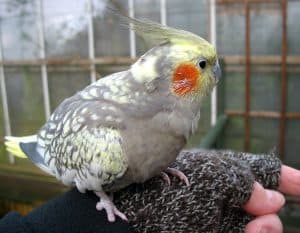
There are a few ways to tell if your cockatiel likes being touched:
If your cockatiel nuzzles into your hand when you pet it, this is a good sign that it enjoys being touched.
If your cockatiel or pet bird starts to preen itself after you pet it, this is also a good sign that it enjoys the experience.
If your cockatiel starts to make quiet vocalizations, such as chirping or cooing, when you pet it, this is another good sign that it enjoys being touched.
On the other hand, if your cockatiel leans away from your hand when you try to pet it, this is a sign that it does not enjoy being touched.
If your cockatiel starts to make loud vocalizations, such as screeching or screaming, when you pet it, this is a sign that it does not enjoy the experience and is feeling threatened.
If your cockatiel tries to bite you when you try to pet it, this is a sign that it does not want to be touched and is feeling threatened.
How Do I Know if My Cockatiel Is Scared?
As a bird owner, it is important to know when your cockatiel is scared, as it can help you understand their behavior and provide a comfortable environment for them. Here’s how you can identify if your cockatiel is scared:
1. Sudden movements: If your cockatiel becomes startled by sudden movements or noises, they may be scared. Always approach your bird in a calm and gentle manner.
2. Position on the cage perch: A scared cockatiel may move to the highest perch or try to hide near the back of the cage.
3. Fluffed up feathers: A scared cockatiel may fluff up all their tail feathers to make themselves appear larger and more threatening.
4. Bird pecks: A previously tame cockatiel may start nipping or pecking when they’re scared or stressed.
5. Cage bars: If a cockatiel feels threatened, they may try to escape by climbing the cage bars, pacing back and forth, or biting the bars.
It is important to observe your bird regularly to recognize any changes in their behavior, which may indicate stress or fear. If you are unsure, consult with a veterinarian who specializes in veterinary medicine for birds. This article can provide you with basic tips, but a veterinarian co will be able to provide personalized advice on how to understand your cockatiel properly.
To reduce fear and stress in your cockatiel, consider the following:
1. Provide a comfortable, safe, and stress-free environment for your bird with a proper-sized cage, toys, and perches. Ensure the cage is securely positioned and away from windows and drafts.
2. Interact with your bird regularly to build trust and confidence. Use clicker training or positive reinforcement methods to strengthen the bond between you and your bird.
3. Introduce new things, such as toys or food, gradually and with patience.
4. Try to minimize the presence of other pets or distractions in your bird’s area, as this may lead to fear or stress.
5. Be gentle and patient when handling your bird, especially if they are new or have not yet been tamed. Avoid forcing them to interact if they are visibly scared.
In the end, it is important to take the time to understand and care for your cockatiel as an individual. If you notice any alarming changes or ongoing fear, consult with a veterinarian, as they are the experts in pet care and can provide guidance on how to meet your bird’s needs.
Remember that this article is only a starting point, and it is always best to consult with a professional when it comes to the care and well-being of your pet. Seek advice from a veterinarian or visit a pet store with knowledgeable staff who can guide you on the proper care for your cockatiel.
How to Hold a Cockatiel-Bottom Line
The best way to hold a cockatiel is to first get the bird used to your presence. Then, you can gently stroke its abdomen and lightly press down on its stomach to get it to step onto your finger. Finally, you can wrap your other hand around the back of the cockatiel, holding its wings in your palm, and then hold its head with your thumb and one finger while giving it a treat. If you do this, the cockatiel will associate being held with something pleasant. Just be sure to avoid touching its face or beak, as these are the most sensitive areas on the bird.
Just like any bird owners, you will feel pleased when you see progress. But if you notice that there are no changes, you can take your pet pird to companion animal practice or same animal clinic.
For those looking to deepen their bond with their cockatiel, don’t miss out on these insightful articles. Learn the best techniques for getting your cockatiel to sit on your finger and understand the steps to tame a cockatiel that bites, ensuring a harmonious relationship with your feathered friend. Curious about their unique features? Discover why cockatiels have crests and what these crests indicate about their mood and health.
